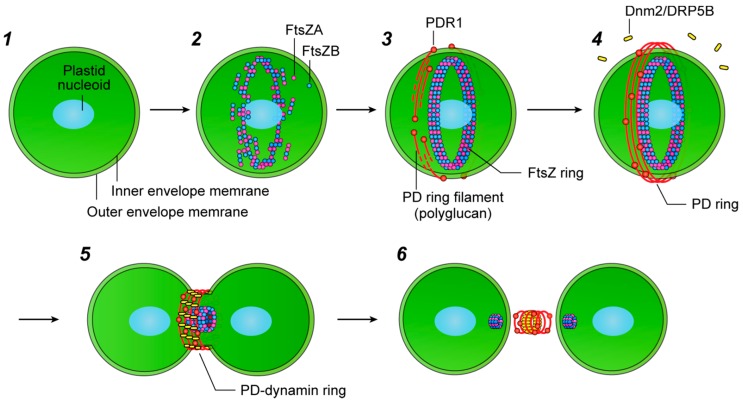Figure 1.
Representation of the plastid-division process. Plastid division occurs as follows: (1,2) Two types of FtsZ protein assemble in a heterodimer in the stromal region, then polymerize to form the FtsZ ring in the center of the plastid. To tether to the inner envelope membrane, FtsZ proteins bind to several membrane proteins. (3,4) PDR1 proteins attach to the outer envelope membrane above the site of the FtsZ ring, and it is hypothesized that PDR1 biosynthesizes polyglucan nanofilaments to form the PD ring from UDP-glucose molecules. (5) The GTPase protein Dnm2 (also known as DRP5B) binds to the PD ring filaments and is likely to generate the motive force for constriction. (6) Dnm2 proteins accumulate at the contracting bridge of two daughter plastids and pinch off the membranes. After the abscission of the plastids, the division machinery is disassembled. The inner PD ring and membrane proteins such as ARC6, and PDV2 are omitted from this representation. Modified from Yoshida et al. (2016) [21].

